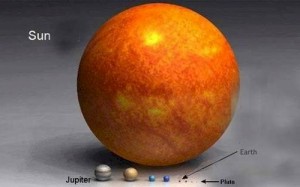Flamingos are gorgeous birds that might have inspired the legend of the Phoenix Bird due to their bright plumage. Recently, a team of Ohio University has found something odd about flamingos: they use erectile tissue while feeding. These birds feed in a very peculiar way. They search for food only on shallow water. Flamingos introduce their beak into water, tilted upside down, and move their heads from side-to-side. Their tongues function like pumps, sucking water into the front of the bill and then squeezing it out through the sides, in a rhythm of 20 times per minute.
Fringed plates on their tongues trap algae and little crustaceans from the circulating water. “We were investigating the evolution of jaw muscles in lizards, birds and dinosaurs. By sheer luck we discovered something new about flamingos.” said Casey Holliday, PhD student.
In their investigation, the researchers injected a colored barium/latex mixture into the jaw blood vessels of an already dead Caribbean flamingo donated by a zoo. Using a new computed tomography (CT) scanning technique, the scientists could see a 3-D view of the flamingo’s head that highlighted blood vessel anatomy.
The tomography revealed large oval masses of erectile tissue on the mouth floor on the tongue’s sides. When the erectile tissues fill with blood, they stiffen, strengthening and supporting the floor of the mouth and the tongue.
Flamingo’s erectile tissue confers stability, as the birds stay with the heads upside down into the water to suck up food.
“Unlike a bony element, this erectile tissue is something that can be used on demand, that can go away when not needed. It’s an interesting way to exploit blood vessels to build something useful, as opposed to simply supplying tissues and muscles with nutrients,” said Lawrence Witmer, an anatomist in Ohio University’s College of Osteopathic Medicine in Athens.
Scientists will investigate flamingo fossils “to see when this feature evolved”, Witmer said. “Fortunately for us, this mass of erectile tissue starts to eat into the side of the jaw bone, leaving a little depression, so we can spot erectile tissues in fossils even if the tissues are obviously no longer there.”



